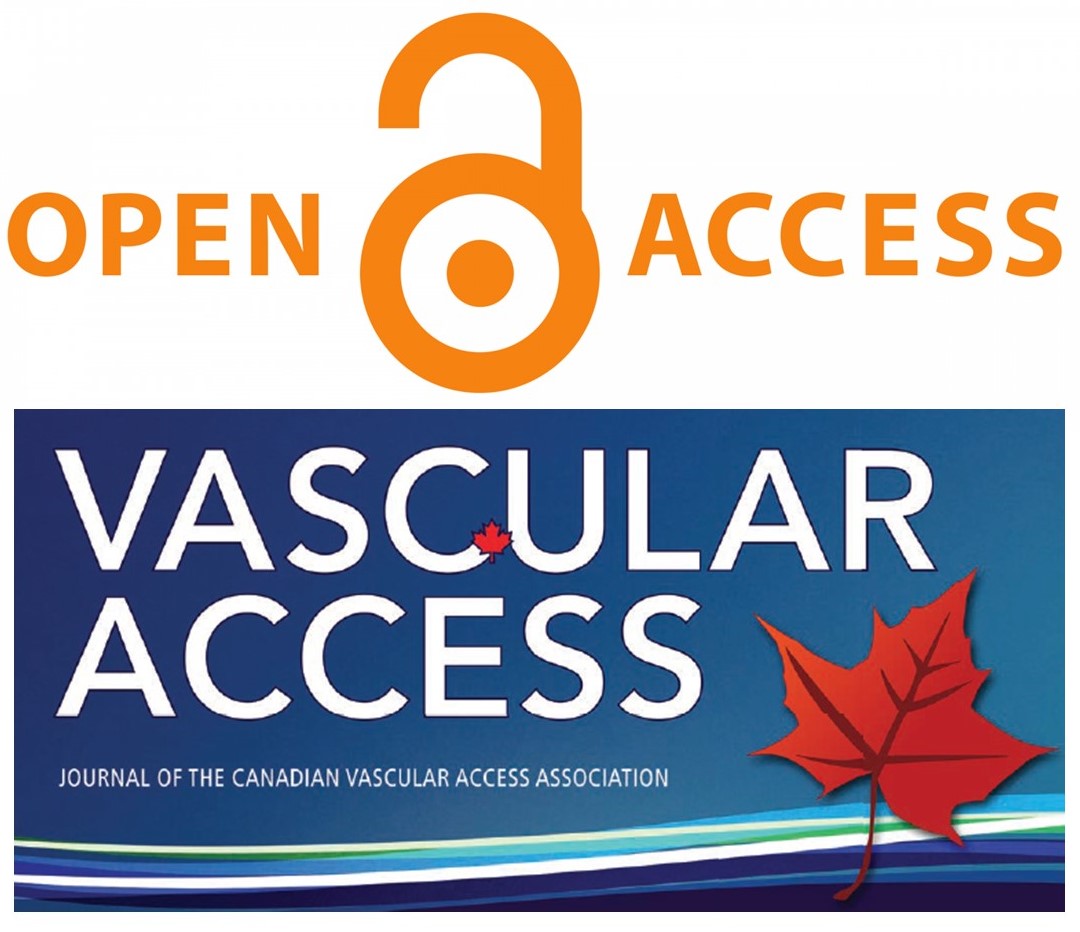
Open Access:
Vascular Access, the journal of the Canadian Vascular Access Association is an open access journal which means that all content is freely available without charge to the user or affiliated institution. Users are allowed to read, download, copy, distribute, print, search, or link to the full texts of the articles, or use them for any other lawful purpose, without asking prior permission from the publisher or the author. This is in accordance with the Budapest Open Access Initiative (BOAI) definition of open access.
"Open Access is the condition where the copyright holder of a scholarly work grants usage rights to others using an open license (Creative Commons or equivalent) allowing for immediate free access to the work and permitting any user to read, download, copy, distribute, print, search, or link to the full texts of articles, crawl them for indexing, pass them as data to software, or use them for any other lawful purpose."
Sourced from Directory of Open Access Journals, 2021
Licensing:
This journal offers open access under Creative Commons Attribution License CC-BY-SA 4.0. Under this license, you are free to: Share — copy and redistribute the material in any medium or format Adapt — remix, transform, and build upon the material for any purpose, even commercial, under the following terms:
· Attribution — You must give appropriate credit, provide a link to the published work, and indicate if changes were made. You may do so in any reasonable manner, but not in any way that suggests the licensor endorses you or your use.
· No additional restrictions — You may not apply legal terms or technological measures that legally restrict others from doing anything the license permits.
Copyright Terms:
Authors retain the copyright and full publishing rights with the proviso that all uses of the material credits CVAA as first publisher.
Read the latest issue of the CVAA journal here.
Why Open Access?
The decision to move the CVAA journal to an open access model has been investigated and considered by the Board of Directors and Editor-in-Chief over the last few years.
- The greatest advantage of open access is that knowledge and scholarly research can be disseminated more easily and with a greater reach.
- Fulfilling CVAA’s mandate of disseminating education in the field of vascular access and infusion therapy, open access gets knowledge to a much broader audience (international) allowing increased and more rapid implementation of successful practices, instigating leading-edge theory in the field, and stimulating practical innovations.
- Our authors retain copyright of their work so that they can publish elsewhere provided they acknowledge that the work was first published with us.
- Open access is becoming a global standard in the scientific communities and we are proud to include our publication in this endeavour that supports collaboration and best practice.
If you have any questions, please reach out to Linda Verde, CVAA Editor-in-Chief at editor@cvaa.info